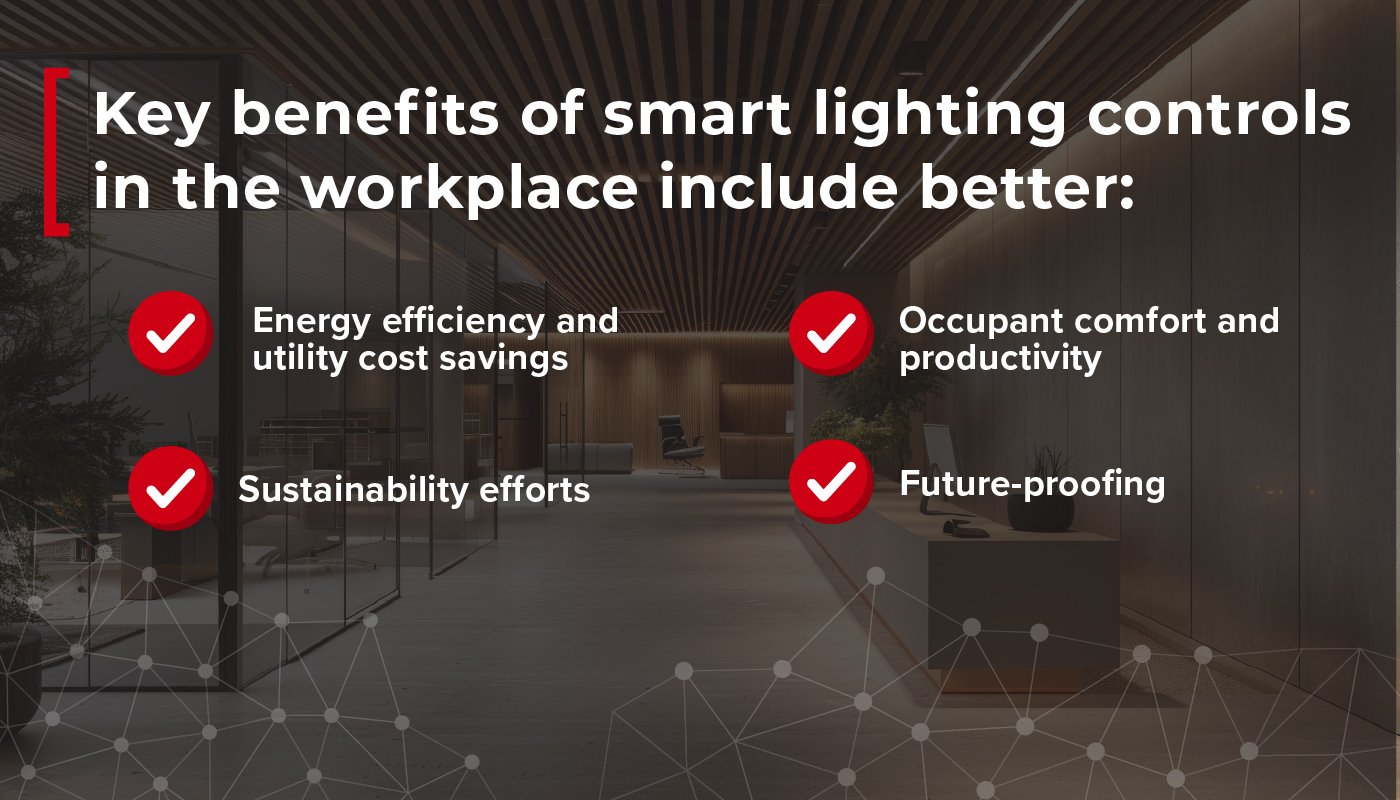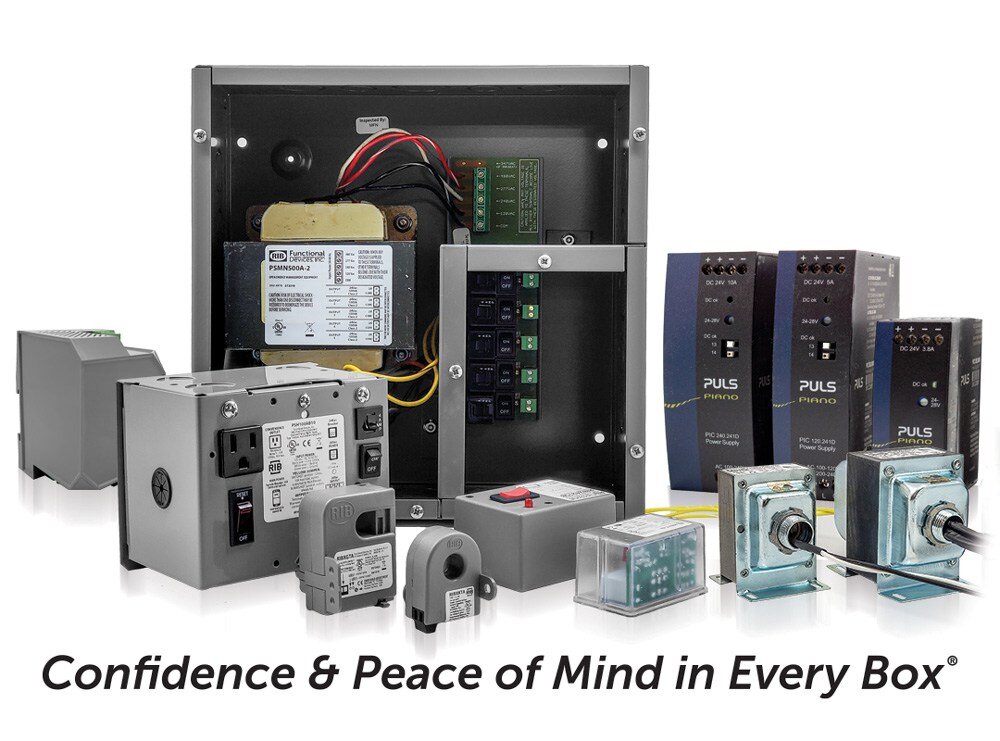Lighting in the modern workplace looks very different from how it used to be. Gone are the days of flickering incandescent bulbs and individual, manual light switches. Now, there is automation and smart lighting infrastructure.
As modern offices and industrial environments have grown in size and sophistication, so has the demand for efficiency, sustainability, and adaptability in their lighting systems. Let’s explore how smart human-centric lighting controls pave the way to better occupant comfort and lower operating costs.
Here at Functional Devices, we understand the importance of adapting to change. Our engineers continually look for ways to improve our electrical components, including relays, wireless modules, and sensors essential to smart lighting controls. Learn more about our story and what sets us apart.
What Are Smart Lighting Controls?
While your lighting controls will never be able to write a research paper, they can achieve a level of intelligence that will make your life much easier. Smart lighting controls are simply a system that allows remote and automated control of various features like dimming, color adjusting, and scheduling, through a (usually) wireless communication protocol.
Besides the typical sensors, relays, dimmers, and controllers of standard lighting controls, smart systems require additional devices. These include:
- Smart LED bulbs and drivers
- Occupancy, ambient light, and motion sensors
- Internet-of-Things (IoT)-enabled controllers and gateways
- Centralized management platforms
A wireless protocol (e.g., Bluetooth Mesh, Wi-Fi) acts as the brain of the operation, connecting devices to control systems and facilitating their communication. While smart lighting controls may rely on a wired communication protocol, wireless options are becoming increasingly popular for their ease of installation, flexibility, cost savings, and adaptability.
Architectural Foundations of a Scalable Smart Lighting System
Like any building system, a scalable smart lighting control system requires a solid foundation. A physical infrastructure enables straightforward and scalable smart lighting enhancements and implementation.
Here are some features you’ll find in modern buildings that allow for smart lighting systems:
- IoT architecture acts as a blueprint for all the layered and connected devices.
- Modular design allows new lights and sensors to be added as a building’s needs change.
- Centralized or distributed control models enable a single point of control, easy installation and management (centralized) or multiple points of control via devices, and more flexibility and scalability (distributed).
- Building management systems (BMS) automate control and optimize efficiency.
The devices necessary for smart lighting fit within the infrastructure created by these features. Let’s explore the key technologies that make lighting controls smart.
Key Technologies in Smart Lighting Controls
Smart lighting systems are all about responding and adapting in real time to environmental conditions, allowing for more human-centric lighting. Many devices must coordinate their efforts for the lighting system to respond effectively. Here’s a breakdown of the main technologies you’ll see in smart lighting:
- Occupancy sensors automatically register human presence and adapt lighting appropriately (e.g., lights automatically turn on when you enter a bathroom).
- Daylight harvesting uses sensors to adjust lighting levels in real time based on the amount of natural light (e.g., LEDs in an office dim when lots of sunshine hits the windows).
- Smart LED drivers ensure a consistent power supply to LEDs, preventing electrical fluctuations.
- Dimming controls enable tunable lighting to be set and automated for various circumstances and needs (e.g., preset levels for meetings vs. presentations).
- Wireless modules and protocols allow flexible implementation, reducing wiring costs and complexity (e.g., Wi-Fi).
All these technologies, with their various devices, will be coordinated through a centralized lighting management platform. It’s essential to manage smart lighting properly to ensure:
- Proper monitoring, scheduling, and data analytics
- Tracking and insights into energy consumption
- Integration with other building systems
- A steady supply of real-time data for predictive maintenance
Benefits for the Modern Workplace
A responsive and adaptable lighting system brings many advantages to a building’s bottom line and those working day in and day out inside the facility.

Scalable, energy-efficient systems must be agile and grow, change, and optimize as demands fluctuate. Remember, it’s more than installing a few occupancy sensors here and there. Instead, smart lighting controls are like a sophisticated cog in your building automation system (BAS), working with other systems to create a whole organism that functions efficiently and effectively.
Plan for the Future With Functional Devices
As smart lighting controls redefine workplace infrastructure, architects, engineers, and facility managers must embrace scalability, efficiency, and adaptability in their plans and designs. Consider smart human-centric lighting as a strategic investment, future-proofing your building while enhancing cost savings and occupant comfort. It’s a win-win-win.
It’s also a win-win to work with Functional Devices (we know we’re a little biased). We get to carry out our mission of helping customers while you get efficient, innovative solutions for your smart lighting system! Explore our line of lighting control and building automation devices and contact our team with any questions. We’d love to hear from you.
About Functional Devices, Inc.

Leaders in the Industry
The world was a very different place in 1969, when Functional Devices, Inc. was founded by engineer and electronics enthusiast Albert Rittmann, but our commitment to evolution and versatility has allowed us to remain a key player in the building automation and lighting controls industry for over 55 years.
Today, as we embrace emerging technology and lean into the future of building automation, our products are still manufactured in the USA with global materials, and we are still committed to our mission of enhancing lives in buildings and beyond. Back in 1969, Albert could never have predicted the technological advances we live with today, but with the groundwork he laid and the vision of his successors, Functional Devices has adapted and grown into a company that can handle anything.

